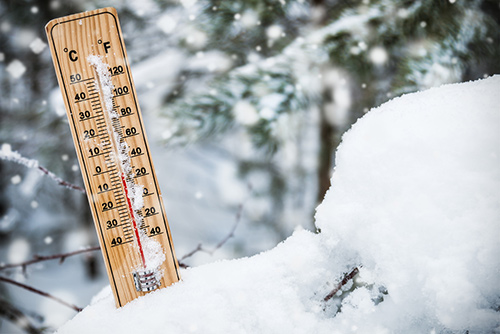
What is Frostbite?
Frostbite is an injury due to the freezing of the skin and the underlying tissues. In most cases, frostbite is treatable, but it can potentially turn into a serious condition. It’s likely to occur when the skin is exposed to cold, wet, and windy weather. It’s most commonly seen on the fingers, toes, nose, ears, cheeks, and chin. However, any skin can be vulnerable to frostbite – even covered skin.
What are the Symptoms?
- Cold skin and pricking feeling
- Numbness
- Discolored skin
- Hard skin
- Stiffness
- Blistering
What are the Stages of Frostbite?
- Frostnip: Have you ever noticed your skin turn red, having a tingling sensation, and feel extremely cold when you’ve been outside during the winter? That’s the first sign of frostbite known as frostnip. If you notice that happening, it’s time to head inside and to warm up. Fortunately, frostnip doesn’t cause any permanent damage and can be treated by rewarming the area. Any conditions more severe than this will need medical attention.
- Superficial: Superficial frostbite is the intermediate stage of frostbite. This occurs once the red skin has turned a pale yellow or white. When rewarming the skin, the surface may look blotchy and have a stinging and burning sensation. In the next day or so, a blister filled with fluid or blood may form after rewarming the area. You should seek medical attention immediately if you are experiencing these symptoms.
- Severe: Severe frostbite affects all layers of the skin and the tissues below. Once that happens, your skin will turn blue-ish gray, and lose all feeling in the area. Large blisters will form on the surface in the next two days. After rewarming, the skin will turn black and hard as the tissue dies. You should seek medical attention immediately if you are experiencing these symptoms.
The complications of frostbite can range from fairly mild to extremely severe conditions. The least being more sensitive to cold; whereas, the worst can leave you with nerve damage, growth defects, infection, tetanus, and gangrene.
How to Prevent Frostbite?
Frostbite can be prevented. Follow these tips to keep you warm this winter:
- Limit your time in cold, wet, and windy conditions – Frostbite can occur within 30 minutes to exposed skin in cold temperatures.
- Dress in several warm layers of clothing – Wear at least three layers of clothing that will keep you insulated and dry. Don’t forget to wear hats, mittens, and socks that fit well and are not too tight.
- Be prepared for bad weather – When traveling in the winter, it’s important to be prepared for the worst. Have an emergency supply kit and warm clothing stored in your car in case you get stranded. It’s also a good idea to let others know when and where you’ll be traveling.
- Keep moving – Moving your body will keep your blood flowing, which will keep you warmer. Don’t exercise until you’re exhausted, and if you start to sweat, unzip for a few minutes to prevent wet clothing.
- Watch for the signs – Now that you know the signs, make sure that you keep an eye out for them. If you notice red or pale skin, tingling, or numbness then you should seek shelter promptly.
Closing Thoughts
When heading outdoors this winter, be sure to make it quick and bundle up. If you see signs of superficial or severe frostbite, visit Prairie Orthopaedic & Plastic Surgery, PC in Lincoln, NE as soon as possible. These signs are not to be ignored and should be treated immediately. For questions or concerns regarding this topic, please call 402-489-4700.
Resources: Frostbite, Mayo Clinic https://www.mayoclinic.org/diseases-conditions/frostbite/symptoms-causes/syc-20372656

